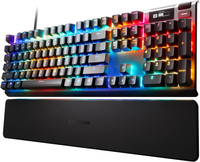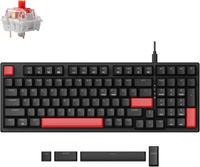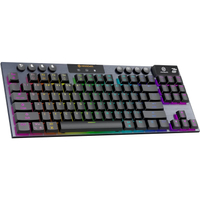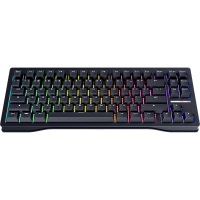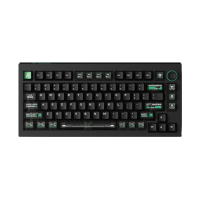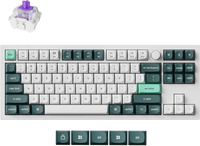The best gaming keyboard in 2025: Tested and rated
The best gaming keyboard for all play styles
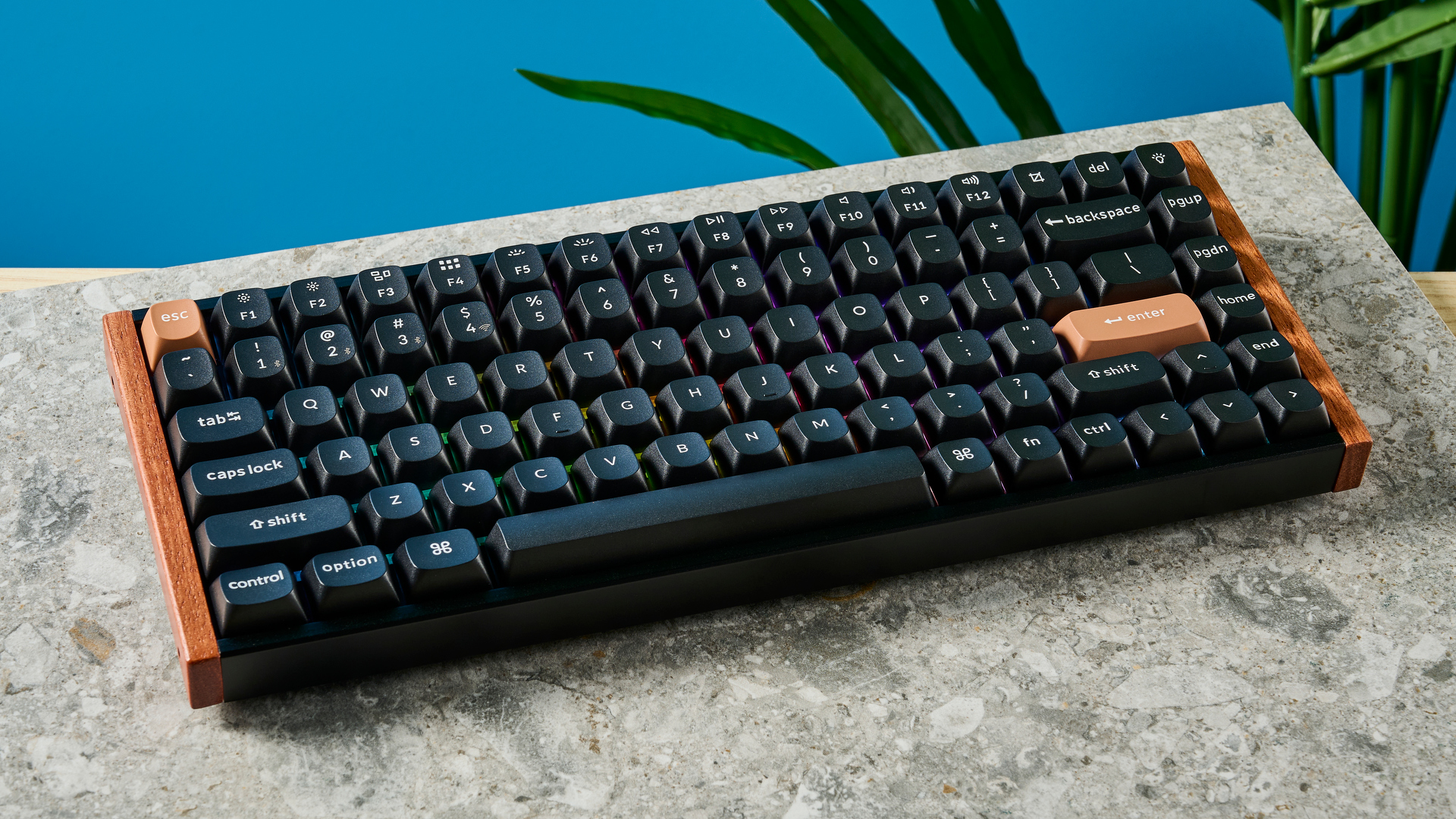
The best gaming keyboard can give you an edge in the best PC games. We know this first-hand after reviewing and testing hundreds of these peripherals over the years—using them both for work and play.
Gaming keyboards give me the same responsiveness and tactility as the best mechanical keyboards, along with features like RGB lighting, custom profiles, hot-swappable designs and more. They're the ultimate peripheral for serious gamers and writers alike.
While gaming keyboards are generally pricier than their office counterparts, they're worth every cent if you want to elevate your gaming experience. Some of our favorite gaming keyboards include the superb Keychron K2 HE, which is ideal for both work and gaming thanks to its smooth magnetic switches. We also like the Lemokey X1, a budget peripheral offering performance on par with pricier alternatives.
Below is a selection of the best gaming keyboards my team and I have tested. This includes boards from prominent manufacturers like Logitech, Keychron, Corsair and more. And once you’ve found a gaming keyboard you like, pair it with the best gaming mouse to take your gaming to the next level.
The quick list
Here's a quick overview of the best gaming keyboards you can buy right now based on our testing and reviews.
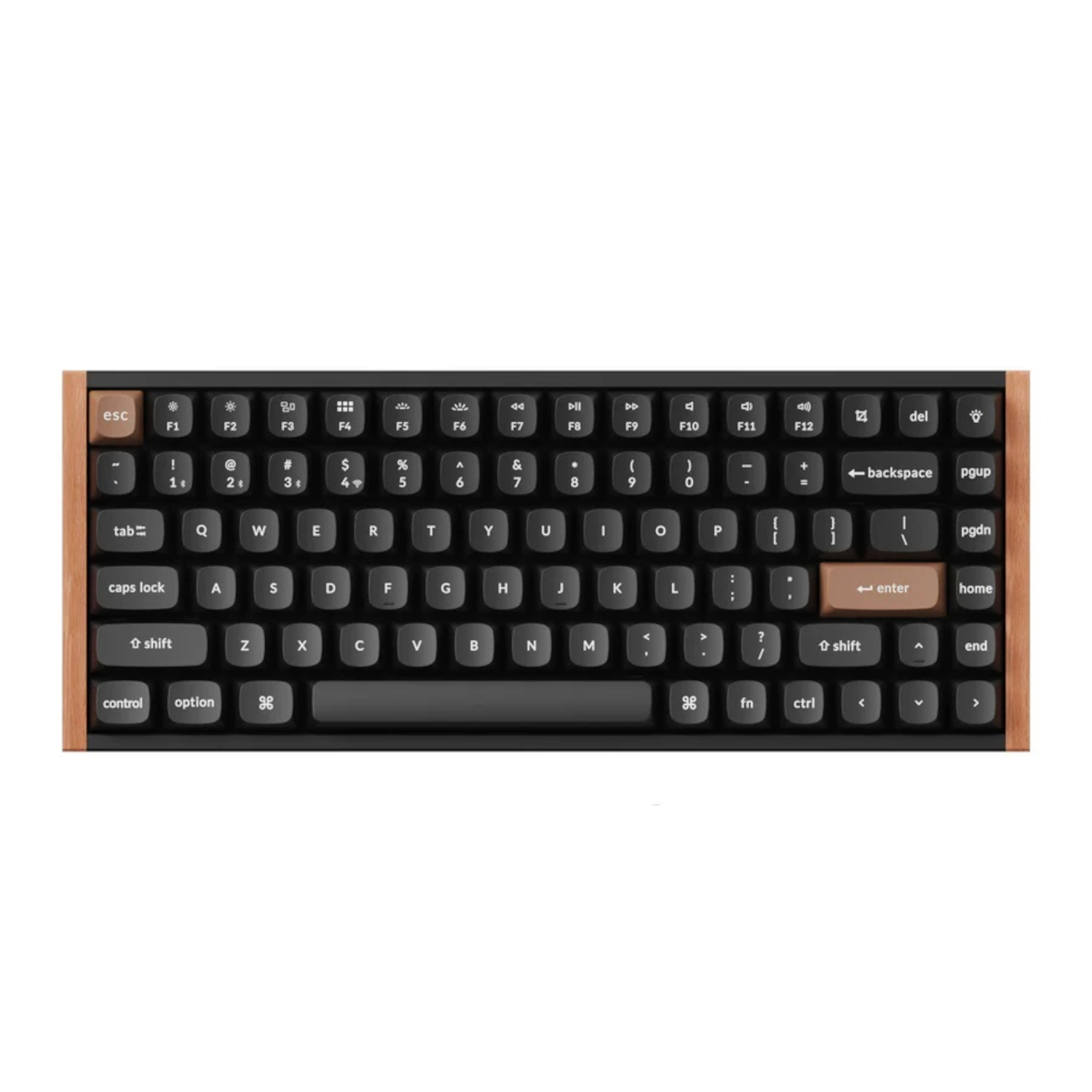
Keychron has turned its legendary K2 from a custom productivity board into a gaming monster thanks to Gateron double-rail magnetic switches. The K2 HE has a roster of features commonly seen in top-tier gaming boards, including rapid trigger, last key prioritization and multiple actuation points. Could this be the best all-rounder ever? We certainly think so.
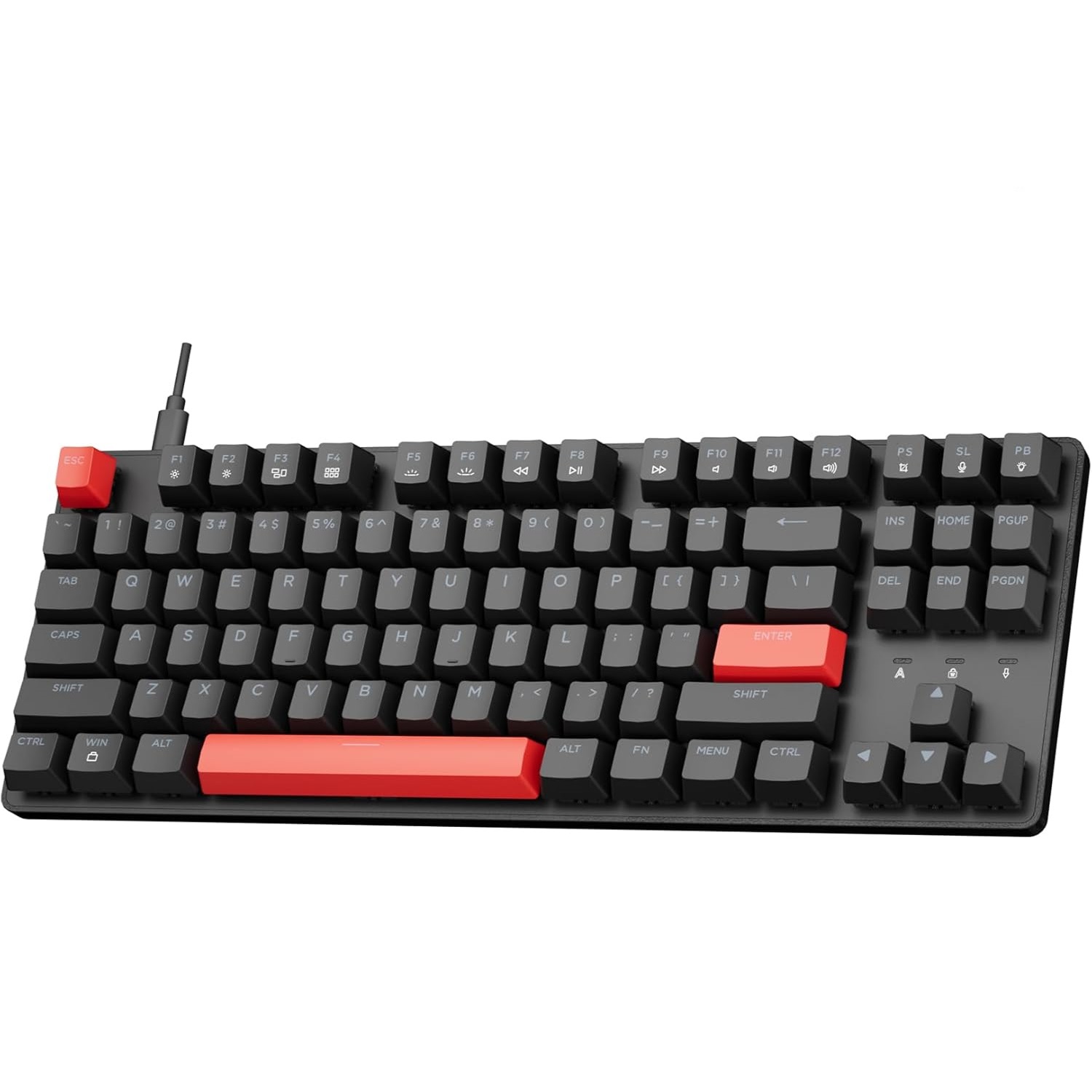
The Lemokey X1 is quintessential gaming on a dime. For $36, this keyboard offers awesome typing and gaming performance. Its build is akin to a premium keyboard, and you can customize its backlighting via user-friendly software. Though its ABS keycaps feel cheap and the board isn’t hot-swappable, it’s hard to complain given its excellent price.
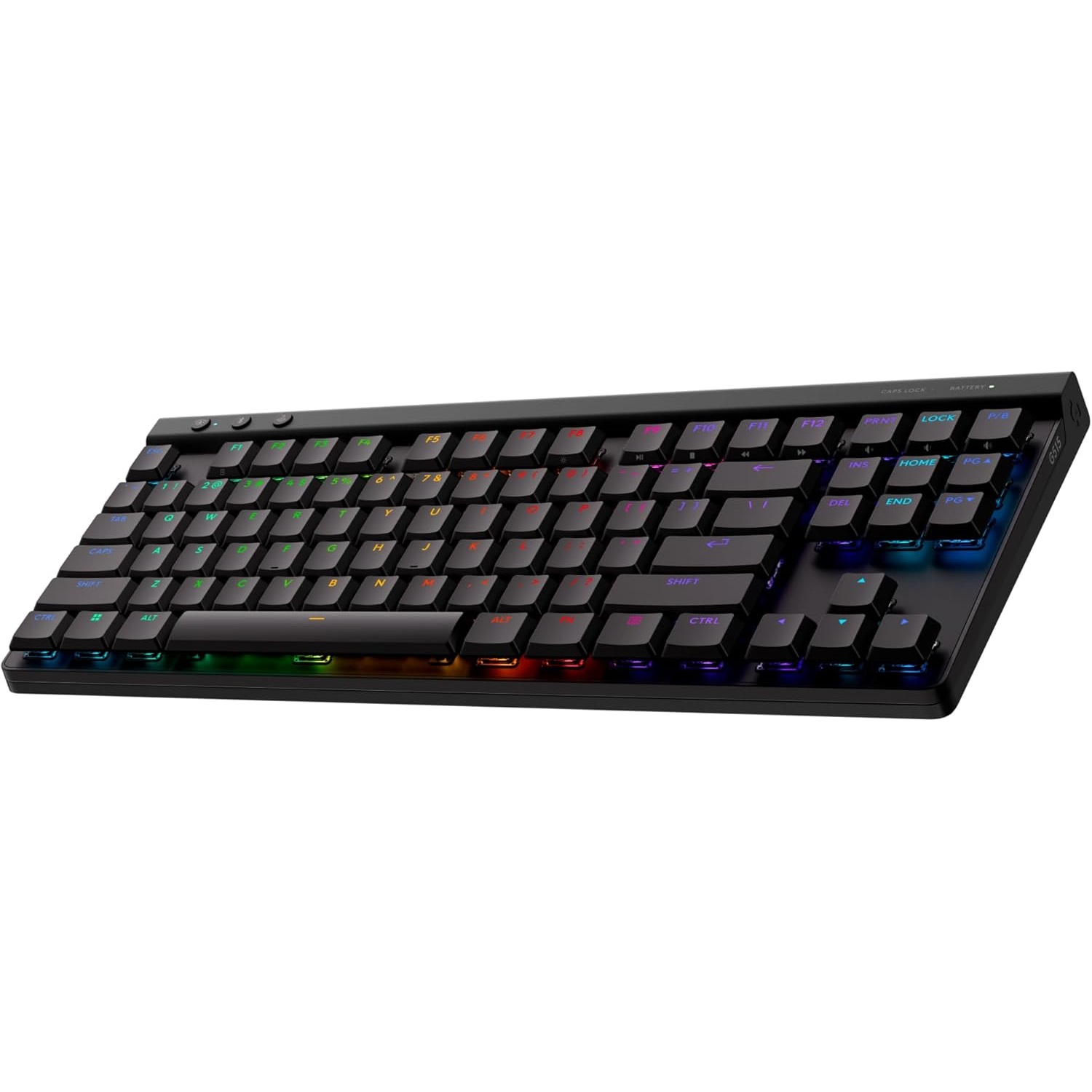
The Logitech G515 Lightspeed TKL is perfect for gamers who want a smaller keyboard that won’t get in the way of their mouse. This board has an incredible companion app and looks gorgeous to boot thanks to its sleek build and powerful RGB lighting options. This small(er) keyboard is a winner.
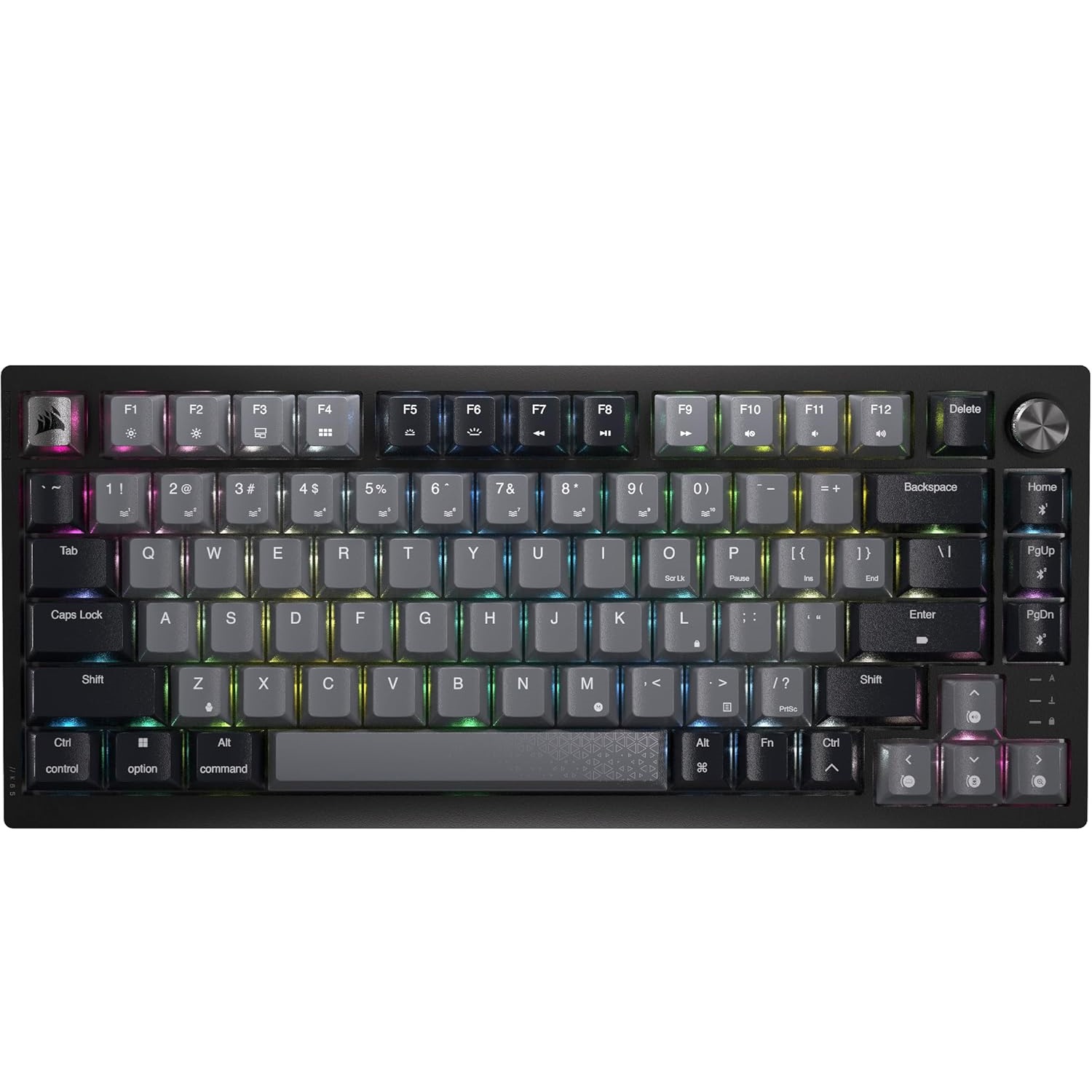
The Corsair K65 Plus Wireless is an excellent wireless gaming keyboard thanks to its smooth switches, sound-dampening and programmable RGB lighting. It’s also hot-swappable for good measure. Though we wish it had an aluminum frame and more distinguishing features, its $159 price tag is cheaper than the competition.
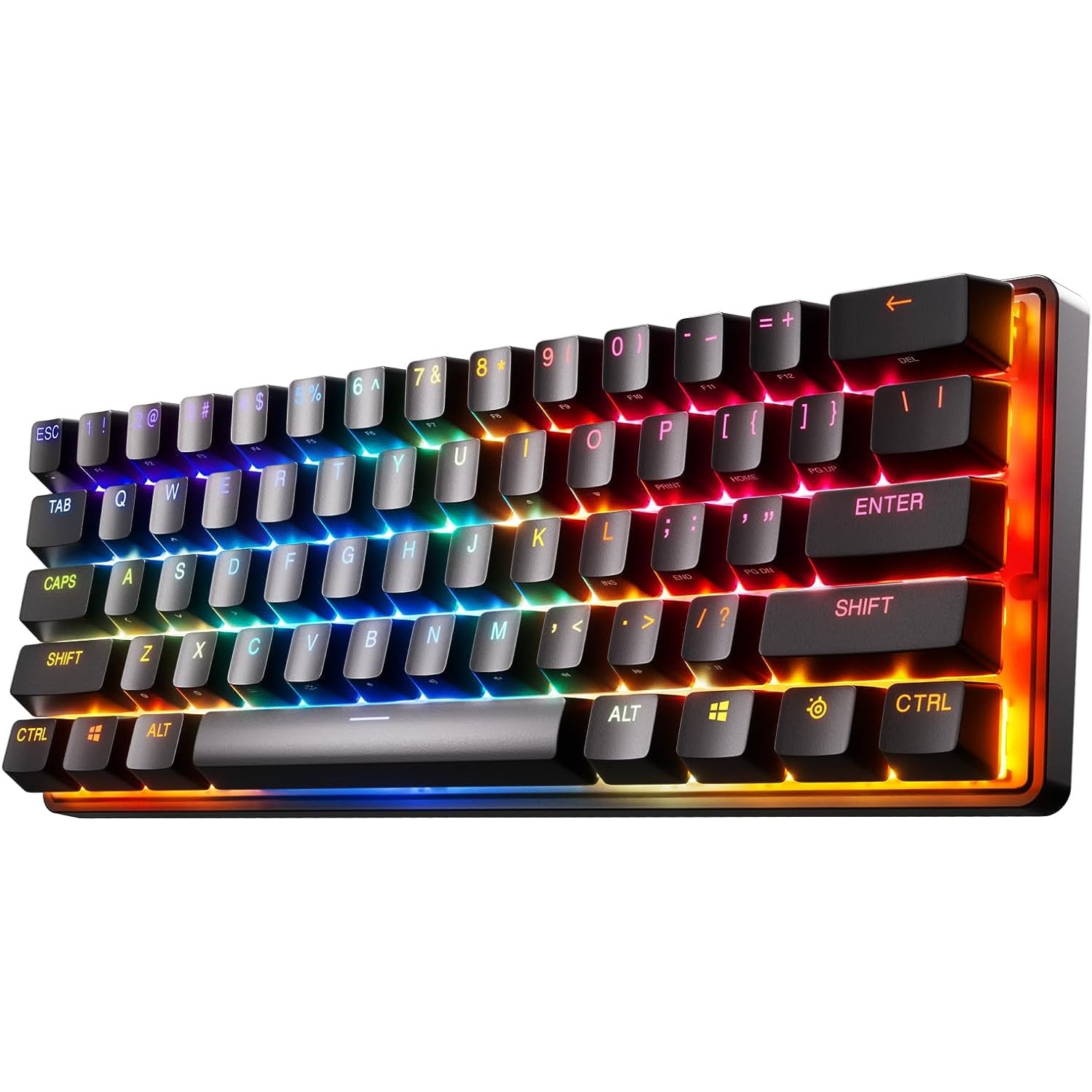
If you want something smaller than a TKL, you can’t go wrong with the SteelSeries Apex Pro Mini. Its high-quality build and versatile range of per-key customization options are designed for competitive gamers. SteelSeries’ OmniPoint Hall Effect switches also deliver stellar performance. Though pricey, it can give you a competitive edge.

The Redragon Blue Siren K654 is a fantastic gaming keyboard thanks to its 1,000Hz polling rate and responsive switches. It sports a lovely design with different shades of blue and features customizable RGB lighting. Best of all, it’s not too pricey. While its keys produce an unpleasant metallic ping and its software can be finicky, this board’s strengths overcome its faults.
Load the next 4 products...

The Field75 HE is NuPhy’s most gaming-oriented board to date. It packs adjustable Hall Effect switches with multiple actuation points, scalable polling up to 8K, solid companion software and assignable custom buttons for your most used functions or binds. It’s wired only though, and isn’t the best value for money compared Keychron’s current stock of HE boards. As with any magnetic board in 2024, your hot swap options are limited, too.

The finest low-profile gaming keyboard you can buy, the NuPhy Air60 HE packs heaps of performance. Its Gateron Magnetic switches bring adjustable actuation and quad actuation points per keypress. There’s also 8K polling, rapid trigger and last input prioritization. It’s wonderfully built, beautifully styled and reasonably priced, too. In classic NuPhy fashion, it’s also a demon to type on. We struggle to find anything bad to say about this wonderful little gaming keyboard.
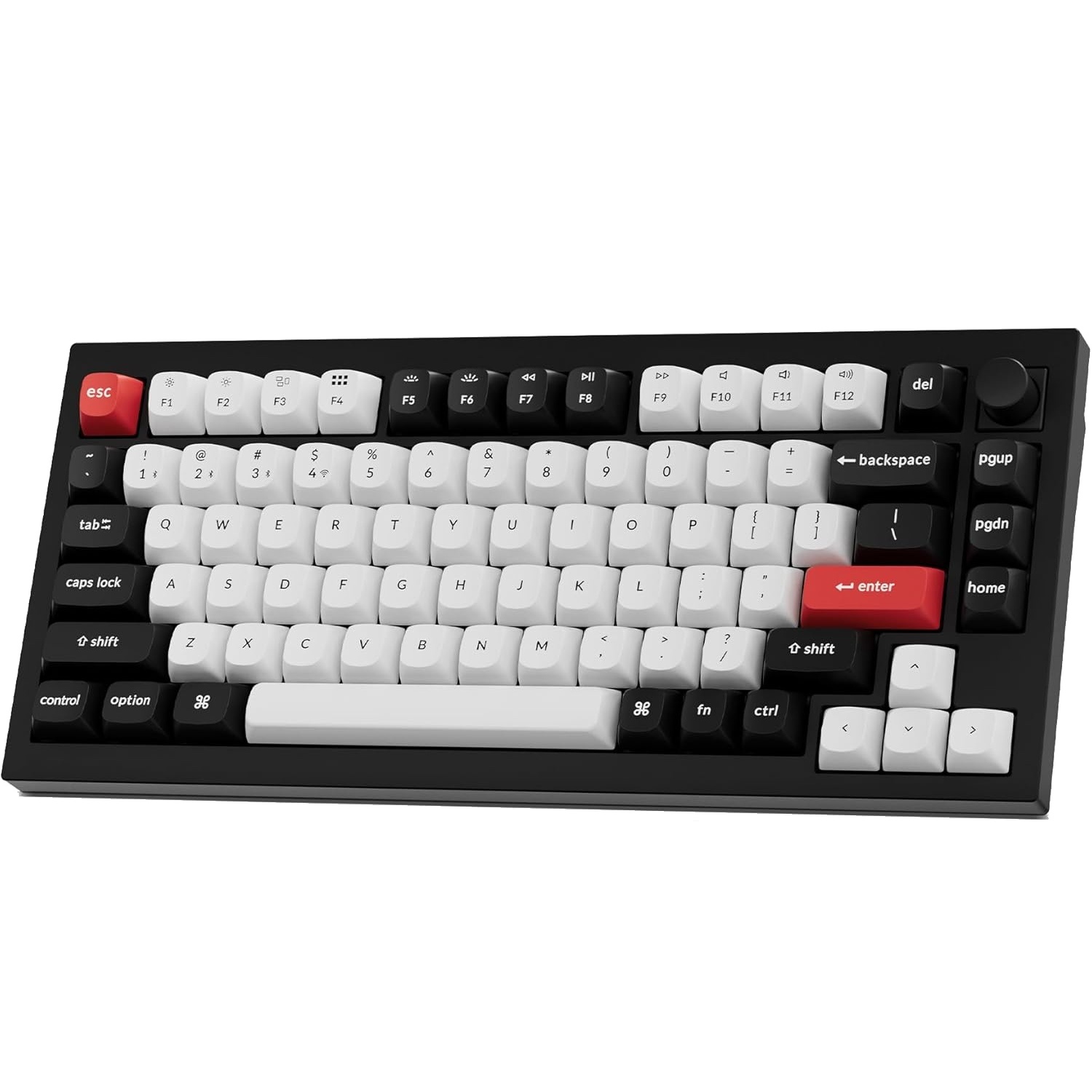
Easily the best metal keyboard money can buy right now, the Q1 HE offers a heap of gaming features thanks to its excellent Hall Effect switches. That’s not all, as the Q1 HE offers all of the great productivity features you can find on the non-magnetized Keychron Q1 — expect some of the smoothest typing on top of a wealth of customization options.
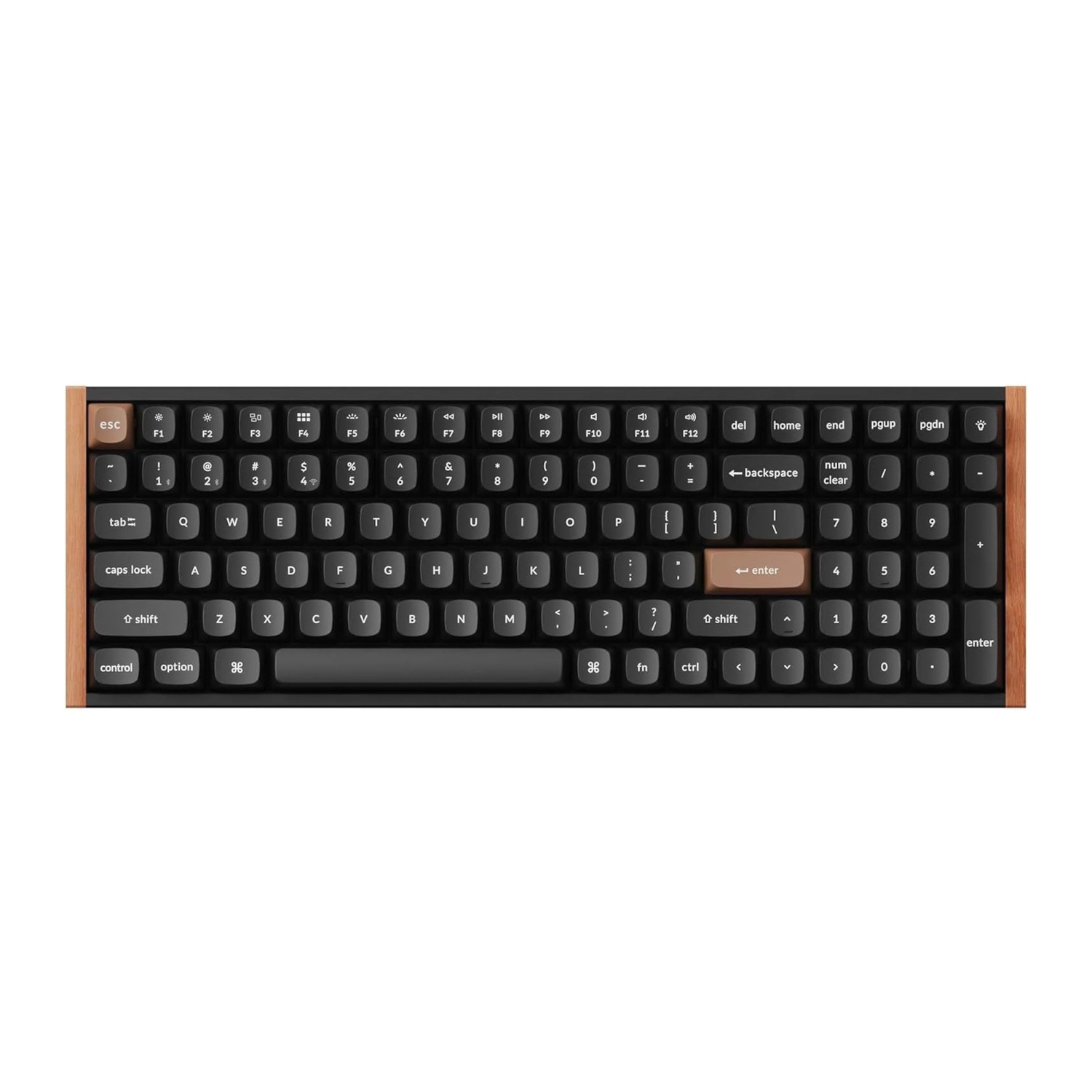
If you’re on a budget and need a powerful magnetic keyboard, the Keychron K4 HE should be right up your alley. Sporting lovely looks and a sturdy build, this is a fantastic board for both gaming and productivity. Per-key and quad-actuation let you adjust each key’s sensitivity, while features like Rapid Trigger give you a competitive edge.

Tony is a senior staff writer at Tom’s Guide covering everything computing and gaming-related, which naturally includes gaming keyboards. Tony loves these peripherals because of their precision, tactility and aesthetically pleasing design. Whether it's mowing down monsters in Doom Eternal or writing reviews, Tony couldn't imagine life without a reliable gaming keyboard at his fingertips.
The best gaming keyboard you can buy today
Why you can trust Tom's Guide
The best gaming keyboard overall


Specifications
Reasons to buy
Reasons to avoid
The K2 HE is the latest version of Keychron’s legendary K2. Now equipped with Hall Effect magnetic switches, it makes an ideal peripheral for folks who want a board that’s equally reliable for competitive gaming and productivity.
Despite coming from a typically productivity-oriented manufacturer, the K2 HE’s magnetic switches provide a roster of gaming features you’d usually only see in top-tier gaming keyboards like the Corsair K70 Max or SteelSeries Apex Pro. We’re talking rapid trigger and last key prioritization, allowing for rapid movements and counter-strafing in FPS games like Counter-Strike or Valorant. It also features multiple actuation points, meaning a single keystroke can have multiple inputs throughout the press cycle.
That said, the K2 HE is still a productivity weapon. Thanks to adjustable actuation points, the Gateron magnetic switches are epic for typing, although we found they weren’t quite as comfortable as tactile switches. In testing, we backed off the actuation from the default 1.6mm to 3.2mm and saw typing speeds and accuracy skyrocket, making this one of the best boards for anyone who writes.
Our only criticism in testing was the limited switch choices available. This board uses Gateron Double-Rail magnetic switches, and only three types exist that currently fit the board. We’d expect that to change over time, but if you want lots of switch choices, you’re better off with a conventional mechanical board.
Despite all the above, the K2 HE doesn’t sacrifice the things that made the K2 great in the first place. It looks great, is hot-swappable and remains relatively affordable at $130, undercutting other premium 75% mechanical boards like the NuPhy Halo75 V2 ($149) and the Lofree Flow84 ($159) while offering heaps more gaming performance.
Read our full Keychron K2 HE review.
The best budget gaming keyboard


Specifications
Reasons to buy
Reasons to avoid
You don’t have to sacrifice quality when purchasing a budget gaming keyboard and the Lemokey X1 is a perfect example of that. While this board has some issues, we found it better than most keyboards at its price point.
Currently priced at just $36, the Lemokey X1 offers awesome performance for both typing and gaming, boasting features typically found in more expensive models. Its body feels premium and robust, and the tactile brown switches we tested offer a delightful typing experience. The keyboard's 1,000Hz polling rate ensures fun gaming responsiveness, outperforming other budget options like the MageGee Sky87.
The X1 also has red-only backlighting which can be customized via Lemokey Launcher, its intuitive companion software, which can also be used to remap keys, program macros, and more. We love that you don’t have to download additional software to customize it, as you do with competitor’s peripherals (we’re looking at you, Asus Armoury Crate). Instead, you can reprogram the board with the VIA web app. This launcher works great, and since it’s browser-based, you don’t have to download anything.
The keyboard isn’t without its flaws, as the ABS keycaps feel less than premium and may suffer wear and tear over time. Additionally, it lacks hot-swappable switches which could deter modders. These aspects aren’t complete deal breakers, however, and make sense given this board’s budget nature.
Despite these minor drawbacks, the X1 remains an outstanding choice for anyone seeking a budget-friendly mechanical keyboard with premium features. If you’re new to the world of gaming keyboards (or even mechanical keyboards), this makes for a solid introduction.
Read our full Lemokey X1 review.
The best TKL gaming keyboard
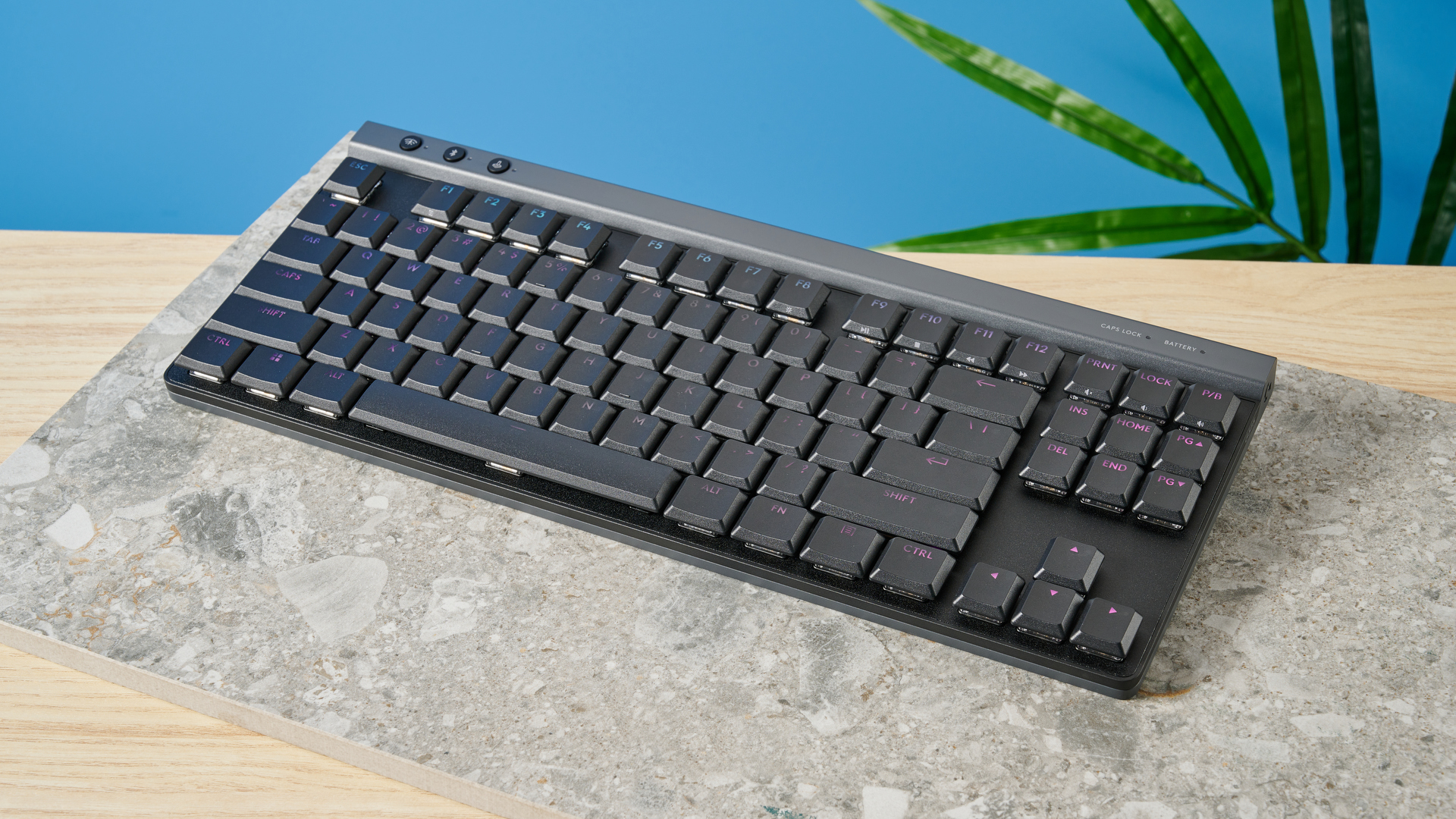

Specifications
Reasons to buy
Reasons to avoid
The Logitech G515 Lightspeed TKL is marketed as a gaming keyboard but it’s just as viable for productivity. This is thanks to its low-profile mechanical keys and a slew of customization options. Its slim compact TKL design and light weight also make it easy to travel with.
Speaking of design, the case has a smooth matte coating while the keycaps have a gorgeous textured finish that feels good to type on. We prefer the G515’s aesthetic over the shiny metallic finish of some other gaming boards. That said, some might find this admittedly plain-ish-looking keyboard boring. But you likely won’t notice thanks to the awesome typing experience the low-profile keys and sound-dampening design delivers.
RGB lighting on gaming keyboards can be hit or miss for some. However, even an RGB skeptic like me has to give respect to the G515’s robust lighting options. Customizable via the G Hub companion app, you can select from several preset lighting options or create your own profiles from scratch. The lighting isn’t too garish, which is good if you plan to use this peripheral in the office.
We played games like Deadlock with the G515 and found the keys’ 1.3mm actuation distance perfect for Valve’s fast-paced shooter. We were able to quickly readjust our direction in mid-stride without a problem, which is important in an online game like this. Using abilities within the game was also seamless thanks to the low 1ms response time. These aspects also make typing on this board feel great.
The Logitech G515 is an easy recommendation for anyone looking for a low-profile TKL keyboard that’s ideal for both gaming and productivity. With responsive, low-actuation switches and keycaps that are a joy to use, this sleek keyboard will serve you well.
Read our full Logitech G515 Lightspeed TKL review and view our Logitech promo codes.
The best wireless gaming keyboard
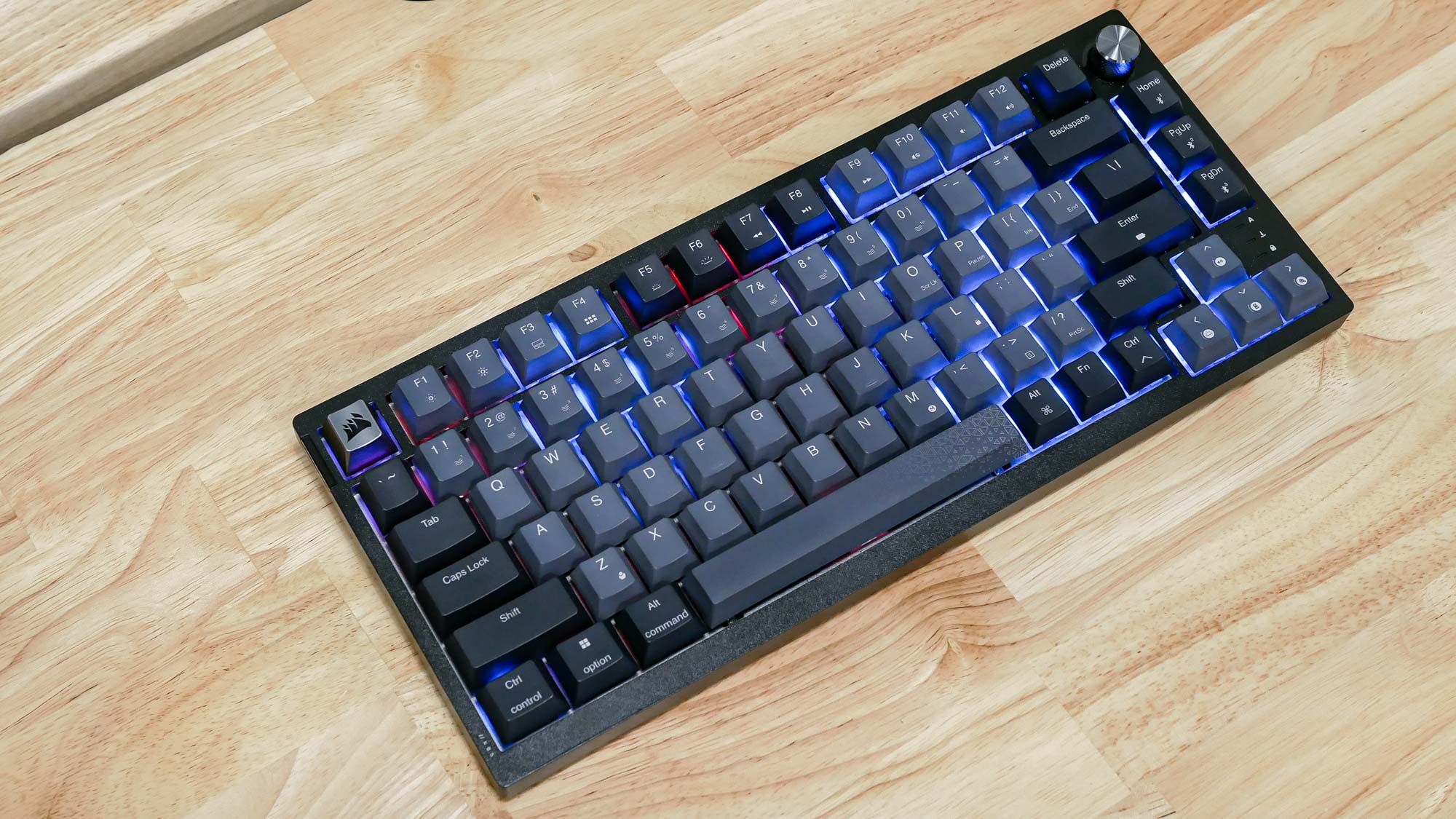

Specifications
Reasons to buy
Reasons to avoid
We’ve long been fans of Corsair’s keyboards but always wished the company offered a smaller, wireless version of these excellent peripherals. Our wishes were granted thanks to the incredible Corsair K65 Plus, which is Corsair’s first 75% keyboard. It has everything we love about the company’s keyboards, just in a manageable size.
The Corsair K65 Plus is not only compact and wireless, but it’s also fully hot-swappable. Not a fan of the included pre-lubricated Corsair MLX Red linear switches? You can swap them out for tactile ones of your choice. The sound-dampening design produces quieter keystrokes, which could be useful if you work alongside others. And as expected for a gaming keyboard, the per-key RGB lets you customize its lighting. Best of all, it’s compatible with Windows, Macs and even the PS5.
Like all Corsair boards, the K65 Plus offers excellent performance for playing games and typing. The textured PBT-coated keycaps and smooth keystrokes allow this peripheral to become an extension of your fingers. The included switches are fantastic, but I had an even better time when I swapped them out for Holy Panda X tactile switches. But like I said, you can use almost any 3-pin and 5-pin switches you want.
This board isn’t perfect, however. While its polycarbonate chassis is sleek and sturdy, I would have preferred an aluminum frame to make it look and feel more premium. And though I don’t have a problem with its subdued design, it’s admittedly a little boring. Also, I wish the rotary dial had more customization options within the iCue software.
Despite some quibbles, the Corsair K65 Plus is my favorite Corsair keyboard so far.
Read our full Corsair K65 Plus review.
The best mini gaming keyboard
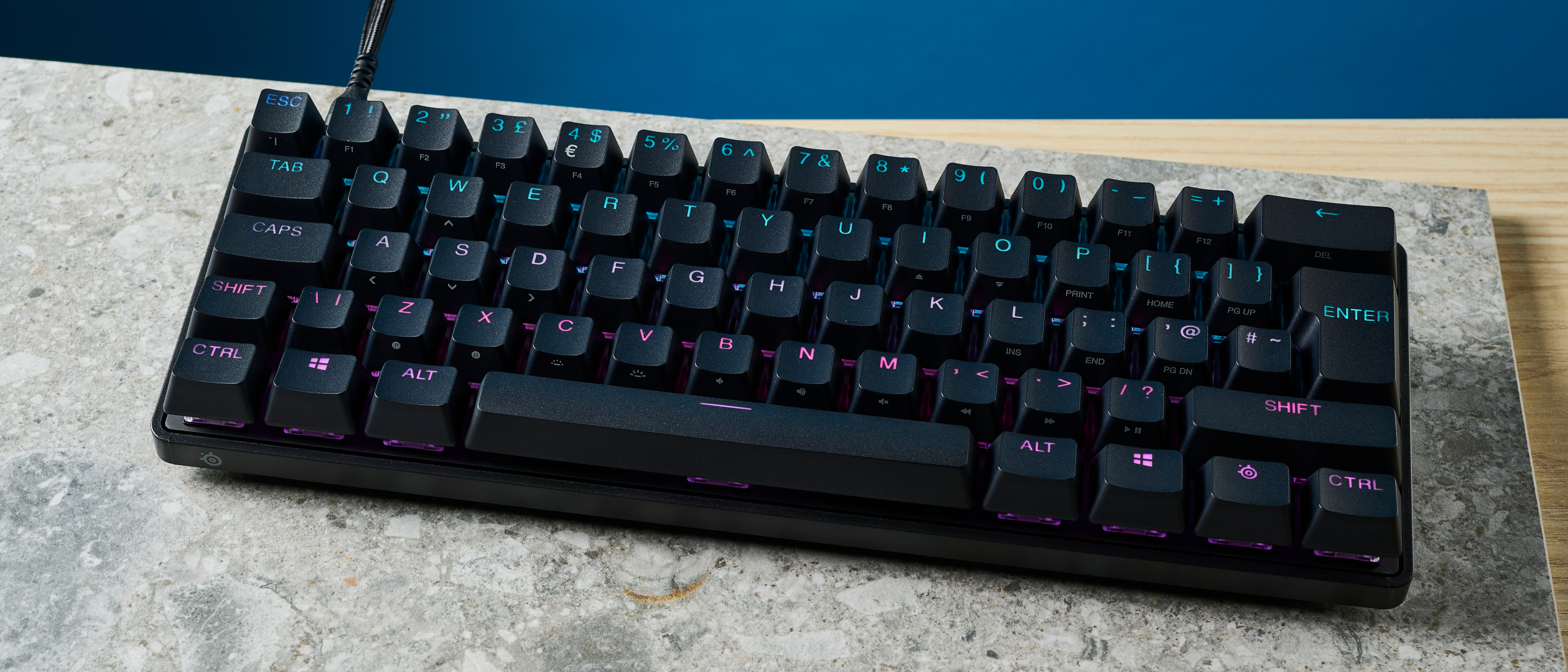

Specifications
Reasons to buy
Reasons to avoid
The SteelSeries Apex Pro Mini might lack keys due to its 60% design but this board makes up for that with its responsive Hall Effect switches. Thanks to those switches, you can program up to two actuation points per key—effectively doubling the number of keys at your disposal. This is also one of the most affordable ways to try Hall Effect switches.
The Apex Pro Mini features premium components such as a high-quality plastic bottom, a sturdy aluminum top cover and double-shot PBT keycaps. All of these stand up well to continual use, which is good considering this board costs a hefty $179. Thankfully, it’s easy to carry around since it only weighs 1.34 pounds.
This tiny keyboard delivers a fun gaming experience. That’s due to the 1,000Hz polling rate and 0.7ms response time. The aforementioned Hall Effect switches can have an actuation point down to 0.1mm, which is insanely fast—and useful if you’re playing online. This certainly worked wonders in Valorant, where you have to be quick on your virtual feet to stay ahead of competitors.
For all its virtues, the SteelSeries Apex Pro isn’t perfect. There are minor brightness issues with the RGB lighting and the Hall Effect switches are not ideal for long-form typing. The Apex Pro Mini does not offer the smoothest experience for productivity but makes an effort to account for this with handy shortcuts to the most used keys. Offering powerful per-key customization in a small package, the Apex Pro Mini is an excellent mini keyboard for gaming.
Read our full SteelSeries Apex Pro Mini review.
The best wired gaming keyboard
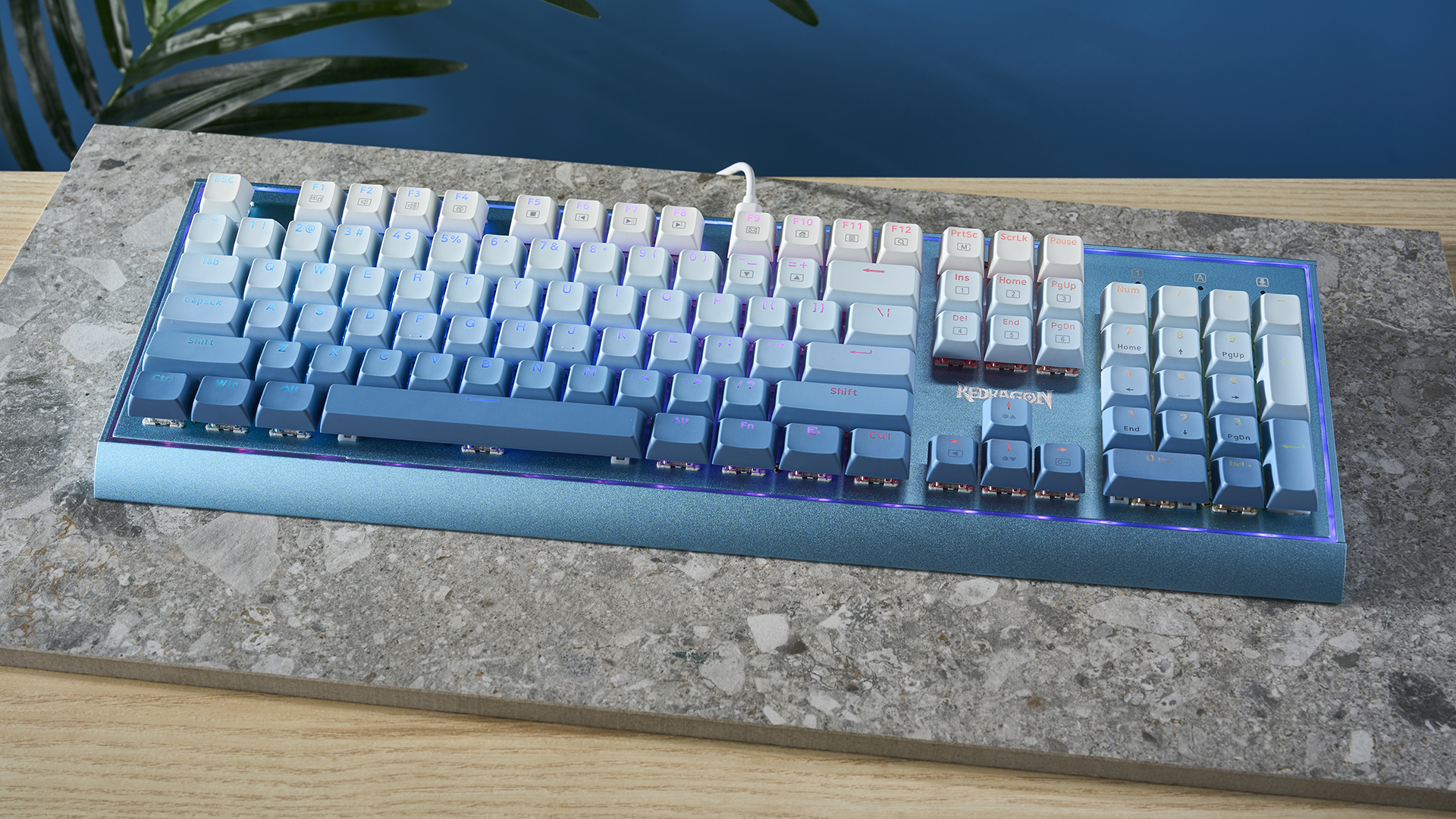

Specifications
Reasons to buy
Reasons to avoid
Ideal for budget-conscious gamers and typists looking for a high-performing mechanical keyboard, the Redragon Blue Siren K654 is a fantastic choice that’s under $100. If you want a keyboard that excels in both gaming and productivity without breaking the bank, this is worth considering.
The Blue Siren K654 stands out with its hot-swappable switches, vibrant RGB backlighting, and sleek multi-tone blue keycaps, all for just $69. With a full-size layout and responsive performance, it’s one of the most affordable mechanical keyboards.
In our testing, the Blue Siren K654 delivered impressive gaming results thanks to its 1,000Hz polling rate which ensures you don’t experience any latency issues, even while playing online. Typing was also comfortable and accurate with minimal typos, and it came very close to more expensive keyboards.
The Blue Siren K654 competes with keyboards priced higher, holding its own against premium models such as the Kinesis Freestyle Pro. However, we noticed two flaws with the keyboard: metallic pings resonating from some keys, and the questionable software which we could not install due to a potential virus threat.
Overall, though, for $69, the Blue Siren K654 offers fantastic value for gamers and typists alike, but the noisy keys and uncooperative software might be deal breakers for some.
Read our full Redragon Blue Siren K654 review.
The best gaming keyboard for shortcuts


Specifications
Reasons to buy
Reasons to avoid
The NuPhy Field75 HE is a solid choice if you want a high-performance gaming keyboard with most of the features of a custom productivity board (plus NuPhy’s characteristically handsome styling). While most of NuPhy’s boards up until now have focused more on productivity and typing, the Field75 HE packs gaming specs to rival the most elite boards on the market.
Just like the Keychron K2 HE, the Field75 HE has customizable Hall Effect magnetic switches with adjustable actuation and quad actuation points, so you can assign four actions to a single key press. That’s two more actuation points than you’ll find on the Corsair K70 Max and SteelSeries Apex Pro. The magnetic switches also open up a raft of cutting-edge features including rapid trigger and last input prioritization (A.K.A. ‘Snap Tap’).
The Field75 HE also polls at up to 8K, although the benefits of polling rates this high are imperceptible, so we wouldn’t advise buying the board based on this — a 1,000Hz board like the Keychron Q1 HE will be fine for most. The Field75 HE also features 8 customizable buttons around its case, which you can assign to binds or shortcuts in-game for quick access. Software customization takes place using NuPhy’s launcher, NuPhy.io, which is a fairly decent web-based application giving you lots of control over the board.
In testing, we loved the Field75 HE but felt that it didn’t offer many real-world benefits over our favorite Hall Effect board, the Keychron K2 HE. The only real difference is 8K polling, which won’t impact your gameplay to any noticeable degree. What’s more, the K2 HE is cheaper than the Field75, is wireless and uses Gateron’s dual-rail Hall Effect switches, which are more stable than the White and Jade switches used in the NuPhy. There’s also the fact, as with all Hall Effect boards right now, that switch choices are quite limited for the time being, as the switch technology is still relatively new.
All that said, while it doesn’t offer the sheer value for money of rivals, the Field75 HE is still well worth the money if you’re after a gaming keyboard with S-tier gaming specs, fantastic looks and a reasonable price.
Read our full NuPhy Field75 HE review.
The best low profile gaming keyboard


Specifications
Reasons to buy
Reasons to avoid
The NuPhy Air60 HE is the best low-profile gaming keyboard you can buy, so if you need an ultra-lightweight and portable gaming deck with elite magnetic features, this is it. While it’s super thin and compact, it’s also a 60% layout mini-board, making it perfect for both your backpack and a compact or minimal gaming desk setup.
This keyboard features Gateron’s Low Profile magnetic Jade or Jade Pro switches, which are unbelievably good. NuPhy has put Gateron’s magnetic technology to better use than anyone else here, too, extracting as many features and as much control out of these fantastic switches as possible. There’s rapid trigger, last key prioritization (A.K.A ‘Snap Tap’) and 0.1mm actuation. There’s also quad actuation, plus a range of other features including Mod Tap, which performs different actions based on whether you hold or tap a key. Interestingly, this board features two modes called Rapid Shift and Hyper Tap, which can both help with counter strafing like LKP/‘Snap Tap’, although they function differently, meaning they may not get you kicked from games like LKP (for now). It also polls at 8,000Hz, to minimize input lag.
We were blown away by the performance of this board, especially for its fairly modest $139 price tag. It also looks brilliant and sounds pretty decent too. We were also surprised at how comfortable the board was to type on, given it has a firm top-mounted plate/PCB assembly — a lot of this is due to the firmly sprung Jade Pro switches which help cushion impacts. Thanks to that adjustable actuation, the board also performed extremely well in our typing speed and accuracy tests.
There are a couple of drawbacks. As a 60% board, it can be a bit of a pain for general productivity thanks to the lack of arrow and function keys. That goes for all mini 60% layout boards, though, so is just something to consider before you buy. It’s also wired only, which feels like a missed opportunity on a board that is otherwise so portable. And, at the time of writing at least, low-profile magnetic switches are very new, so there aren’t any aftermarket switches to swap into the board if you want to customize it.
If you want a wireless board or one that can double up better for productivity, we’d recommend the Keychron K2 HE with its 4,000mAh battery and sensible 75% layout. If you need ultra performance in a low-profile deck, though, the Air60 HE is the board for you.
Read our full NuPhy Air60 HE review.
The best metal gaming keyboard
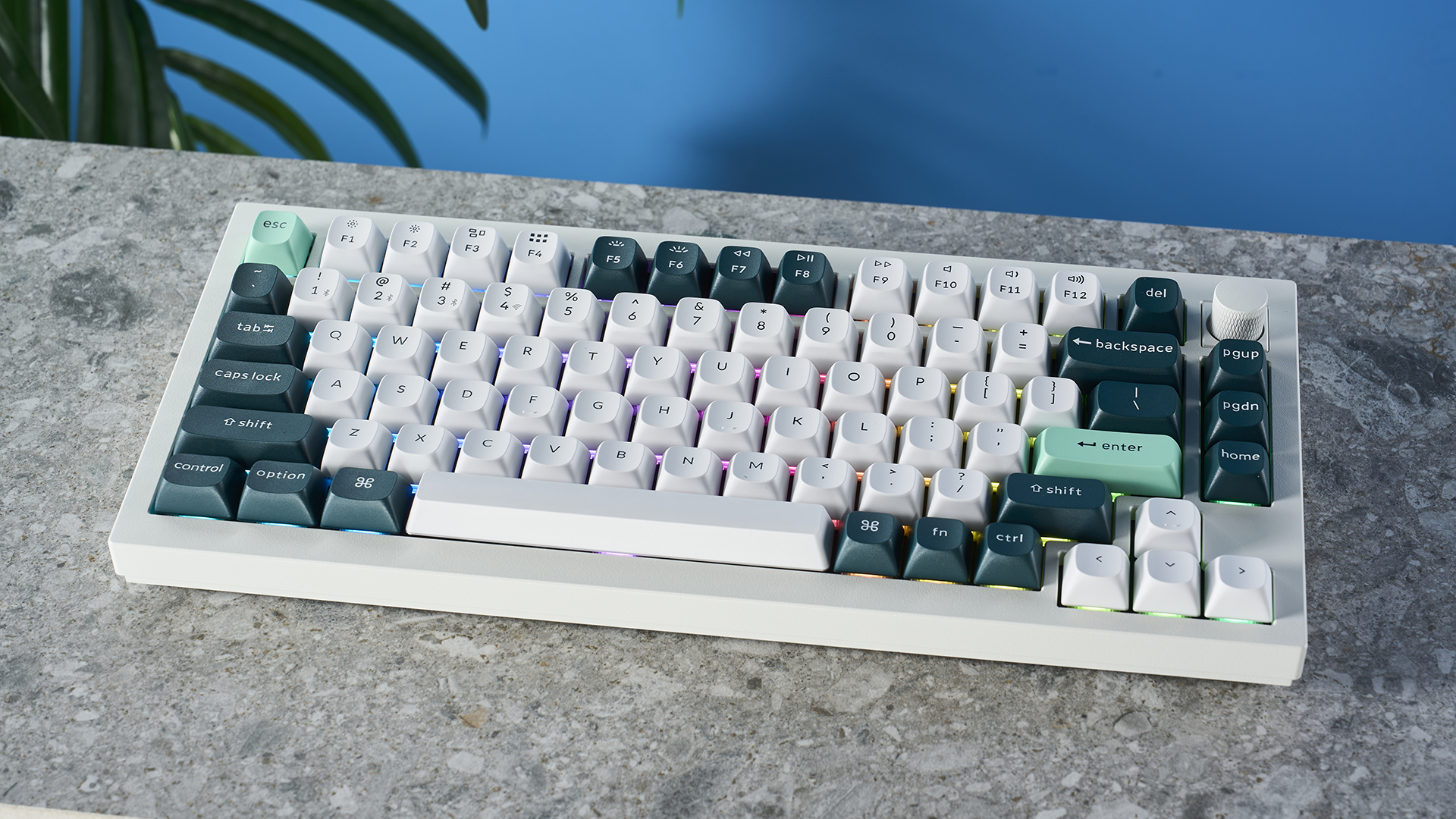
Specifications
Reasons to buy
Reasons to avoid
Proving that you don’t have to compromise when it comes to your keyboard, the Keychron Q1 HE is a full metal, Hall Effect-switch-equipped beast. An upgraded version of the Keychron Q1 Pro and Keychron V1, two of our favorite keyboards, it has all of the features you could ever ask for on a custom deck, and is fully customizable thanks to QMK firmware.
The more you use the Q1 HE, the more you’ll realize how powerful it is. The Hall Effect switches are individually configurable, and you can set the point at which a keypress is registered to be as low as 0.2mm — if this sounds like a big deal for gaming, it is. You will notice a massive improvement across games that require quick response times. If that's not enough, the keyboard offers quad actuation points (as opposed to only dual points on gaming boards like the Corsair K70 Max and SteelSeries Apex Pro), and also supports Rapid Trigger, allowing for multiple keypresses to be registered without fully releasing the key — the latter is game-changing for games that require quick keystrokes in succession.
The only drawback is the price — for $80 cheaper, you can get your hands on our favorite gaming keyboard, the Keychron K2 HE. These are very similar boards, both equipped with the same features but in slightly different layouts and with different case materials. If the metal case of the Q1 HE isn’t a big draw for you then it's hard not to recommend the K2 HE instead. With that being said, fans of the full metal design can grab the Q1 HE for not much more than your average metal Keychron keyboard, at just over $200.
Read our full Keychron Q1 HE review.
The best magnetic gaming keyboard
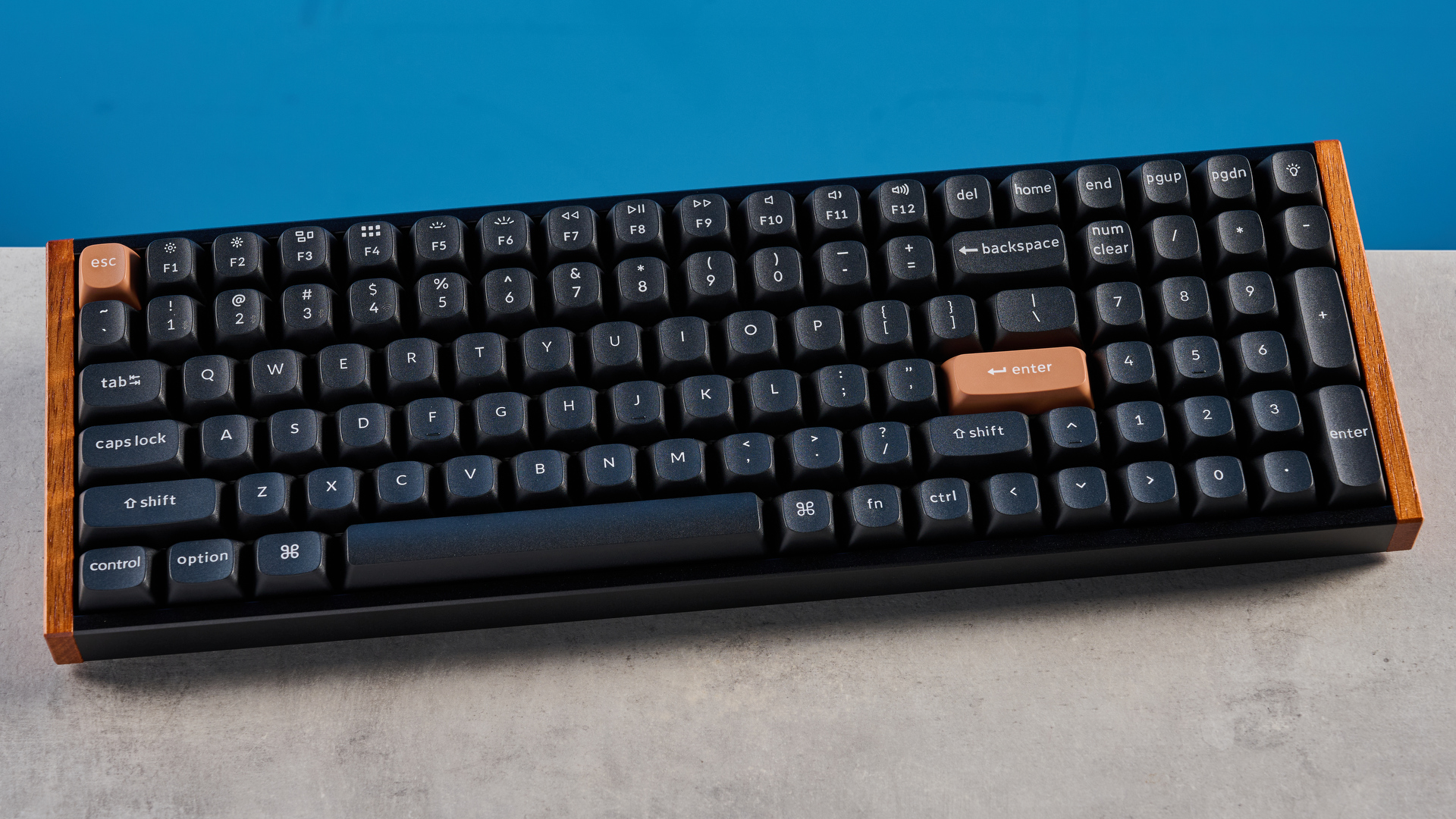
Specifications
Reasons to buy
Reasons to avoid
Magnetic keyboards have become popular in recent years since they allow you to assign multiple actions to a single key. Not only that, but their magnetic switches arguably provide smoother actuation than traditional mechanical keyboards. If you want to check out what we think is the finest magnetic keyboard now, the Keychron K4 HE is the clear choice.
Straight out of the box, the keyboard impresses with its stunning, minimalist looks, and connecting it to your PC reveals the extent of its magnetic capabilities. You can set up to four actuation points to a single key, which opens up a world of possibilities when playing competitive games. Its Hall Effect switches are highly responsive and a joy to use.
The Keychron K4 HE is as powerful as it is beautiful. Its rosewood accents and combination of black and brown keycaps can add flair to your office setup. Not only does it look great, but it’s also built really well.
The cherry on top of the cake is the K4 HE’s performance. Along with quad-actuation, it also features Rapid Trigger and Snap Tap. This is a superb keyboard for casual and competitive gaming. It’s also great for productivity, as you get a number pad, and its responsive switches are lovely to type on.
If you don’t mind the awkward 96% layout that can feel cramped and the limited switch choice, then the K4 HE should be on your radar.
Read our full Keychron K4 HE review.
Also tested
The SteelSeries Apex Pro features premium construction, reactive RGB lighting, and detailed companion software. Its gaming performance is its greatest strength, with Hall Effect magnetic switches that let you adjust the actuation points of most keys, plus an OLED screen to customize the keyboard on the fly. If you can overlook the subpar wrist rest, the 43 keys whose actuation you can’t adjust, and be satisfied with the 1,000Hz polling rate this could be the board for you.
For the low price of $64, you can get your hands on a 75% keyboard that will not disappoint with its performance or design. With some cheap but responsive Linear Outemu Red switches and some fantastic RGB backlighting, this wireless keyboard thrives at gaming, while the wealth of functionality shortcuts means you can use it equally well for work.
On a budget but looking for a great gaming and productivity keyboard? Then the Lemokey X5 is for you. For just $49, you get premium construction, great gaming and typing performance, and web-based companion software to customize the board to your liking. It does have a few minor flaws, but nothing that will stop you from enjoying the X5.
The Hexgears Immersion A3 TKL is a fantastic low-profile keyboard for productivity, thanks to the super silent Kailh linear switches. Its 1,000Hz polling rate is also well-suited to casual gaming, and its sturdy build and customizable RGB and TFT screen make it a joy to use. It isn’t without its quirks though, as the keycaps are fingerprint magnets and you can’t change custom profiles via keyboard shortcuts.
A fantastic gaming keyboard, with a huge array of magnetic gaming features, premium build quality, and an exquisite typing experience. Its companion software is excellent, offering granular levels of customization and personalization. Although its sheer performance helps justify its high cost, rivals offer even more features for less money. Its 80% layout is not standard either, which will be a turn-off for intensive modders.
Lemokey finally makes a gaming keyboard to compete with pro-tier 8K Hall Effect decks from Wooting, NuPhy and others. The L5 HE is a beast of a keyboard, packing a wide array of magnetic gaming features and oodles of modding potential within a premium, CNC-machined aluminum body. It’s pricey, as all elite keyboards are, and its rivals offer more features on paper, but in real-world usage, the L5 HE punches just as hard as any other gaming deck out there.
The Keychron Q5 HE is a stellar keyboard featuring per-key and quad-actuation. Using web-based software, you can adjust each key’s actuation down to 0.1mm, which can prove handy in competitive gaming. The keyboard itself sports a lovely design and it’s built really well. However, it’s expensive and switch choices are limited.
The Keychron Q3 HE is one of the best keyboards for gaming and productivity, thanks to its highly responsive Hall Effect switches, per-key and quad-actuation. Features like Rapid Trigger and Snap Tap make it a powerhouse for gaming. It sports a solid all-metal build and a lovely design, too. However, its steep price point is hard to justify.
How to choose the best gaming keyboard
There are three things to consider when trying to find the best gaming keyboard for your setup: Design, features and price. All three are interconnected, however — keyboards with more complex designs and fancier features cost more money. Simpler keyboards are cheaper. There are no special tricks here.
The first thing you'll want to determine is whether you want a full-size or TKL (tenkeyless) keyboard. This is a pretty simple decision: Full-size keyboards have separate number pads on the right, while tenkeyless models don't. If you do a ton of productivity work, a numpad is worthwhile; if not, you can forgo it and save a few bucks.
During this time, you should also consider what kind of switches you'd like. If you're buying a mechanical model. Cherry MX is generally the gold standard. The most common types of Cherry switches are Red, which is quiet and linear, Brown, which is quiet and tactile, and Blue, which is noisy and tactile. Other switch manufacturers generally offer similar styles, although the color coding may be different.
Some features cost more money than others. RGB lighting can tack a few dozen bucks onto a gaming keyboard's price tag, and wireless connectivity can make a peripheral even more expensive. Though I prefer wireless keyboards to minimize the number of wires on my desk, wired keyboards are perfectly fine—especially since keyboards are (generally) stationary devices.
How we test the best gaming keyboards
To determine the best gaming keyboard, we run each board we review through a variety of tests. The first, and most important, test is to play numerous games and see how the keyboard holds up. I usually like to try at least one FPS, RTS, RPG and MMO apiece, since these are the genres that benefit most from a good keyboard. (You can generally get away with a controller for most action/adventure titles.)
After that, we take a deep dive into a keyboard's software suite, evaluating how easy (or difficult) it is to reprogram keys, set up macros, adjust lighting and create profiles for games. Particularly intuitive software gets high marks; convoluted software can lose some points, even if it's very robust otherwise.
Finally, we make sure to use a keyboard for productivity for at least two or three days. Most gamers don't swap keyboards in and out; what they use for gaming, they'll need to use for work and general computing as well. The better a keyboard is at everyday tasks, the better its recommendation.
Sign up to get the BEST of Tom's Guide direct to your inbox.
Get instant access to breaking news, the hottest reviews, great deals and helpful tips.

Tony is a computing writer at Tom’s Guide covering laptops, tablets, Windows, and iOS. During his off-hours, Tony enjoys reading comic books, playing video games, reading speculative fiction novels, and spending too much time on X/Twitter. His non-nerdy pursuits involve attending Hard Rock/Heavy Metal concerts and going to NYC bars with friends and colleagues. His work has appeared in publications such as Laptop Mag, PC Mag, and various independent gaming sites.
